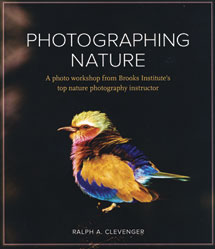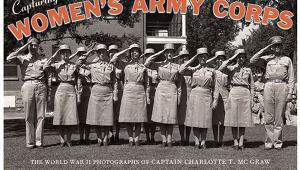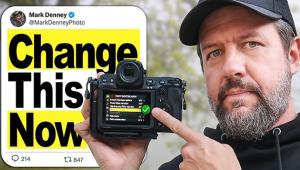Digital Imaging Books: 2010; Real Books For Real Photographers
Sony makes a svelte black-and-white-only eBook reader and claims that within five years half of all books and magazines will be delivered digitally. While electronics companies slug it out in the eBook reader arena, another trend appears ready to add negative synergy. A book publisher once confided that “most people who buy books never read them.” If this follows the classic 80-20 rule and only 20 percent of people who buy books actually read them, are the remaining 20 percent going to spring for an iPad or electronic reader, or just fuggedaboutit?
For this annual roundup I’ve read 100 percent of all the books featured and offer them for you, not to impress people by displaying on a bookshelf, but to read for fun, inspiration, and to learn something you can apply to your own photography.
Best Of The Best
A World in HDR; by Trey Ratcliff; New Riders; 210 pages; $44.99; (ISBN: 978-0-321679-94-9)
In a chapter titled “Q&A vs. Q&A” the author says “hardly anything in life has definite questions and definite answers” and for those readers looking for the answer to life, the universe, and everything, you won’t find it in any photo book I’ve read this year. What you will find here is a dazzling array of HDR images by a photographer at the top of his game who shares what he did, how he did it, and what was going through his mind when capturing the images. Trey Ratcliff’s images are a veritable around the world in 210 pages as he photographs The Great Wall of China as you’ve never seen it before, employing digital darkroom techniques that make it look as if it had been made during the Boxer Rebellion…or yesterday. Ratcliff’s image of Angkor Wat is similarly timeless but uses different techniques that emphasize color and shape. Scattered throughout these photographic riffs is text that takes you into Ratcliff’s “cube of light” theory by showing breathtaking images that explain by example what his ideas are all about. This combination makes A World in HDR a landmark achievement in HDR imaging.
 |
Hackers; by Steven Levy; O’Reilly Media; 500 pages; $21.99; (ISBN: 978-1-449388-39-3)
I always recommend that new photographers read about and look at photographs created by the masters and also believe that digital imagers should know their roots in the computer field. Hackers is not strictly a digital imaging book but is The Right Stuff of computing filled with the amazing, zany, and sometimes sad exploits of computing pioneers. Here you’ll find stories of heroes, villains, and dreamers who simply wanted to make the world a better place through computing. Beginning at MIT in the winter of 1958 and ending at the same place in 1983, I had the same reaction when reaching the last part of The Right Stuff when Gordon Cooper says he’s “flown higher and faster than anybody before.” I couldn’t believe this wonderful journey was over so soon and you’ll feel the same way when reading this magnificent book that combines Steven Levy’s best journalistic urges with creative ones that makes Hackers such a great read. Buy a copy and apply the Hacker ethic to creating photographs that can change the world, as I often say, “one pixel at a time.”
 |
VisionMongers; by David duChemin; New Riders; 256 pages; $44.99; (ISBN: 978-0-321670-20-5)
Over the years there’s been a lot of books written about finding and sustaining a career in photography and David duChemin uses a simple format of clear, honest advice based on experience and case histories of those who’ve “made it.” Like all New Riders books, it’s expensive for its size but the information contained inside these pages will save you many thousands of dollars and years of tears and heartbreak, making it a must-have book for the aspiring pro. His advice about dealing with clients includes a real-world look at the some of the less-talked-about realities of the business of photography, such as when to fire clients. He also cautions about going into debt and clarifies the differences between smart debt and crippling debt. This is the kind of advice you usually discover after it’s too late, so read it now and take it to heart. If you have even a modest amount of talent, follow duChemin’s advice, whisk in a soupçon of luck and you’ll have a successful photographic career.
 |
Getting Started
Jeff Wignall’s Digital Photography Crash Course; by Jeff Wignall; Lark Books; 176 pages; $19.95; (ISBN: 978-1-600596-34-6)
Want to improve your photography fast? Read one or two of the 146 tips in Jeff Wignall’s Digital Photography Crash Course each week and then practice. Most tips fit on a single page and some of the latter ones take no more than two pages, so in just a few minutes you can “consider the beauty of the lowly dandelion” and make some pictures that will expand your visual vocabulary. To get you moving in the right direction, each of the tips is accompanied by an illustration and the technical specifications on how it was made. Most of the tips focus on the capture side but occasionally the author tosses in Photoshop tips such as how to “Create a Blue Flamingo,” but no matter whether you’re photographing the Blue Angels or making a bird blue, this book will jump-start your creativity.
 |
Confessions of a Compact Camera Shooter; by Rick Sammon; Wiley; 228 pages; $24.99; (ISBN: 978-0-470565-07-0)
There’s no denying that compact cameras, point-and-shoots, or whatever you call them are the gateway for photographers to enter the photographic hobby. This book is compact, making it perfect for reading on an airplane or wherever new photographers find themselves as they vicariously journey with Rick Sammon. Where those journeys are is not clear because there are no real location captions in the book; instead, it’s chock full of tips for making the kinds of colorful images that Wiley’s designers have splashed over these well-printed pages. Sammon’s text speaks directly to the reader who wants to make these kinds of photographs. There’s no filler, just the facts as told in Sammon’s warm manner, making it a pleasant journey for the reader.
 |
Creative DSLR Photography; by Chris Coe and Chris Weston; Focal Press; 190 pages; $39.95; (ISBN: 978-0-240521-01-5)
Regular Shutterbug readers know my disdain for the “DSLR” acronym (when’s the last time somebody launched a new film SLR) but as Seinfeld famously said, “not that there’s anything wrong with that.” And there’s nothing wrong with this book and the two Chris’s have done a great job for the new SLR owner by introducing them to all of the real-world differences they’ll face when upgrading from a point-and-shoot camera. The first section is titled “Perception and the Image” but could have more reasonably been titled “Getting Started” because it includes all the stuff on exposure, color, and composition that a new SLR shooter needs. The rest of the book proceeds in the same way while the illustrations echo the kinds of images the newbie SLR owner can reasonably expect from their new camera.
 |
David Busch’s Digital Photography Bucket List; by David Busch; Course Technology PTR; 170 pages; $29.99; (ISBN: 978-1-598639-93-3)
David Busch has provided a perfect smorgasbord because you can nibble it here and there and pick it up later for another, maybe larger bite. The book’s concept presents categories of images along with wonderful examples provided by members of the Cleveland Photographic Society through a competition designed to inspire you to create your own personal bucket list (I’ve had one for sometime). It shows you what can be done with such abstract concepts as capturing the human spirit, special moments, creatures great and small, and others. Images are presented in a landscape format two-page spread with the photo alongside accompanying text and the photographer’s name and portrait. It’s all enhanced by Busch’s lucid text and excellent design and reproduction.
 |
The Digital Eye; by Sylvia Wolf; Prestel; 178 pages; $34.95; (ISBN: 978-3-791343-18-1)
Combining elements of a coffee-table book (albeit a small one) and textbook, the author kicks off the first 52 pages with an illustrated essay of the medium that does for photography what A.D. Coleman’s seminal Light Readings did for analog photography and, in fact, this would make an excellent companion volume if you can find a copy of Coleman’s book on eBay. Sylvia Wolf introduces you to powerful images from well-known and not-so-known photographers and the second half of the book lets the images speak for themselves. The Digital Eye is perfect for the new digital photographer who wants to see over the horizon of what’s possible with this medium.
 |
Photography for the Web; by Paul Duncanson; SitePoint; 166 pages; $34.95; (ISBN: 978-0-980576-87-0)
I’m not so sure what the Viewmaster and stack of 3D reels on the cover has to do with Photography for the Web but there’s no doubt that Aussie Paul Duncanson has put together an excellent introduction on the basics of photography and sharing images on the web. He explains the concept of metadata and tags in clear, concise terms and he’s especially helpful in explaining the many advantages of using Adobe’s Bridge, which has always been treated like the Rodney Dangerfield of image management. He also delves in other applications such as Apple’s Aperture and Adobe’s Lightroom. The penultimate chapter covers sharing your images and is perfect for the brand-new digital imager.
 |
David Busch’s Quick Snap Guide to Photoblogging with WordPress; by David Busch and Rebekkah Hilgraves; Course Technology PTR; 210 pages; $29.99; (ISBN: 978-1-435454-35-4)
It seems most photographers use WordPress to create their blogs and while I’m still using Apple’s iWeb I plan to ultimately shift all of my content by using this book as a guide. Having a photoblog is a great way to share images and the stories behind them and the authors take you step by step from setting up a WordPress account to hosting options to design and implementation. The book’s landscape orientation helps by keeping the amount of text on adjacent pages focused on a single topic while the excellent but small illustrations show what to expect as your blog takes shape from design to content to execution. David Busch’s Quick Snap Guide to Photoblogging with WordPress is the best book on WordPress that’s currently available.
 |
Fast Track Photographer; by Dane Sanders; Amphoto Books; 240 pages; $16.99; (ISBN: 978-0-817400-01-9)
This book is a perfect companion to David duChemin’s VisionMongers. It doesn’t matter how good a photographer you are because if you don’t build your business on a sound footing you’re not going to make it. The most important part of being a professional photographer is the professional side and that’s what Dane Sanders explains in this practical and useful book. There are no photos in Fast Track Photographer; instead, it begins with the story of “Frank,” a hypothetical photographer, and his journey from photo school to a pro with the “grumpies,” a career fatal disease I’ve seen many times in many photographers. Heck, I even had a medium-sized case myself before discovering my personal photographic bliss and finding that bliss is what this book will help you accomplish. At 240 pages, this is a small-format book that you should read at least twice and then re-read annually until you attain a business style that suits how you want to spend your time and live your life.
 |
Capturing The Image
Photographing Nature; by Ralph A. Clevenger; New Riders; 304 pages; $44.99; (ISBN: 978-0-321637-54-3)
A lot of nature photography books were published this year but Photographing Nature is one of the best. This elegantly produced book is well printed on nice paper but it’s what’s on these pages that counts and Ralph A. Clevenger clearly knows what he’s talking about. And for those of you who think that a specialty like nature doesn’t require some extra gear, take a look at the photo of Clevenger’s VW van and the equipment he takes into the field. Yet, I might take that same gear and never be able to produce the artful and sensitive images Clevenger splashes over this incredible book. By the time you get to the chapter titled “Wet Belly Photography” you know that in addition to equipment, technical skill, and an aesthetic sense, it also takes an extraordinary amount of endurance and patience to capture these kinds of images. Scattered throughout the book are assignments to try and if you seriously follow these lessons, your nature images will markedly improve.
 |
Wildlife Photography; by George Lepp and Kathryn Vincent Lepp; Lark Books; 208 pages; $29.95; (ISBN: 978-1-600596-32-2)
Wrapped up in an opulent yet affordably priced package, this is a perfect companion to the above volume created by a master of the genre and focuses on photographing animals in the wild. The Lepps take you on a journey subtitled “Stories from the Field” and the you-are-there text takes you along for a ride in their backpacks as they photograph everything from the tiny pika (it’s not a mouse) in the Colorado mountains to elephants in Africa. In between you join the Lepps on their adventures, photographing bears to birds; in this case, white egrets complement polar bears. There’s even a chapter on “tiny critters” that includes butterflies and other creepy crawlies that usually don’t interest me but here are photographed so artfully that you can’t resist looking at them. This is the best wildlife photography book to come along in a long time.
 |

















































